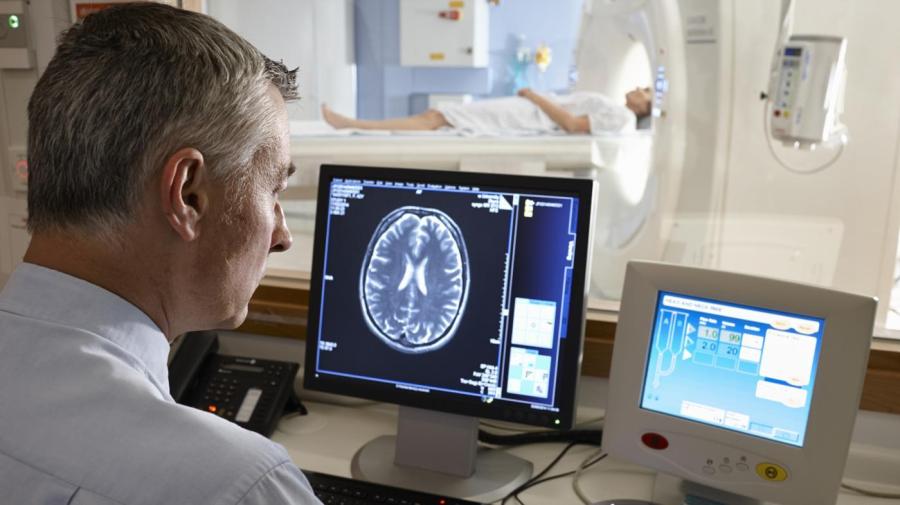How Is a CT Scan Performed Without Contrast?

When undergoing a computed tomography scan without contrast, the patient removes any objects that may interfere with the scanning equipment and then lies on the table that slides into the circular CT scanning machine, according to Johns Hopkins Medicine. While the patient remains still, the scanner moves around his body emitting X-rays, and the technician may ask the patient to hold his breath at times. Technical staff are present to communicate with the patient at all times during the scan.
The patient does not see the scanner rotate, though he may hear clicking, whirring or buzzing noises as the internal mechanism of the scanner moves, notes Johns Hopkins Medicine. A CT scan is painless, but the attending physician can prescribe a mild sedative to patients who are nervous or claustrophobic.
CT scans, with or without contrast, are outpatient procedures, and doctors use them to obtain internal images that show more detail than X-rays, states Johns Hopkins Medicine. A typical CT scan procedure takes between 10 and 20 minutes to complete, though patients may need to wait while a radiologist reviews the images. If the images are not clear, the patient may need to undergo another scanning procedure to obtain clear images.
Contrast in CT scanning refers to an iodinated dye that the patient receives either orally or intravenously, explains Johns Hopkins Medicine. It allows doctors and radiologists to see a particular organ or body tissue more clearly.





